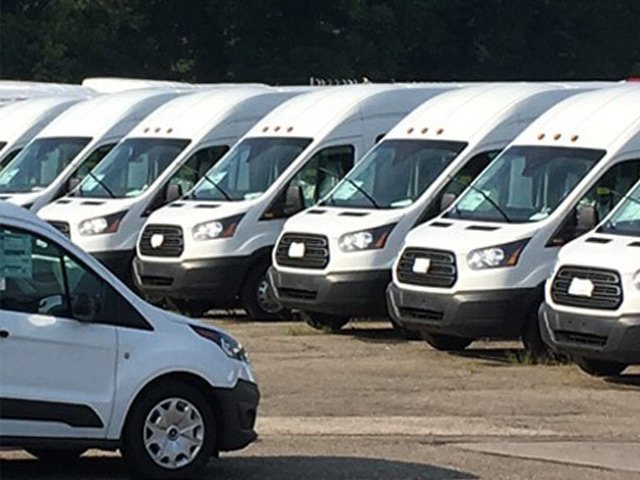Today’s supply chain challenges highlight the need for fleets to always be thinking of creative, innovative, and flexible ways to acquire vehicles. Bailment pools, which offer a “mid-way” between factory and out-of-stock ordering, are one way that fleets can keep costs down while shortening lead times. In challenging ordering climates like the current one, where vehicle production is disrupted and vehicle stocks are low, fleets with bailment pools can be at an advantage. However, like any fleet strategy, bailment pools are not a fit for all situations. Here are some FAQs about what bailment pools are, how they work, and when they make sense for a fleet.
What is a Bailment Pool?
A bailment pool is when a fleet management company, OEM, or upfitter creates an unassigned “pool” of vehicles for a fleet. The fleet can then use this pool as though they were taking a vehicle out of a dealership’s stock, with the benefit of factory-order pricing. Bailment pools can also be used for stocking equipment, such as liftgates, that may have longer lead times.

Why Would a Fleet Use a Bailment Pool?
- Time Savings: Bailment pools offer a way to get vehicles more quickly than factory ordering. Depending on the specific agreement and situation, vehicles may also be pre-upfitted before they are assigned, which reduces overall order-to-delivery time as well. Bailment pool vehicles can use a streamlined upfitting process called “ship-thru,” where the vehicle goes from the assembly line to the upfitter and back into the OEM’s transportation network for delivery to a local dealership. In some cases, for an additional fee fleets may be able to bypass the ship-thru process so the vehicles goes straight from the upfitter to their location.
- Cost Savings: Depending on vehicle model and availability, fleets can save $2,000 – 3,500 or more per vehicle if they use a bailment pool instead of ordering out of stock from a dealership. For an example of the results a bailment pool can deliver, check out this success story here.
- More Flexibility: If a company has vehicles located nationwide and is unsure where a new vehicle will be assigned when they are placing an order, bailment pools offer more flexibility to determine final vehicle location.
How Do I Know if A Bailment Pool is Right for My Fleet?
Start by looking at your fleet’s historical data. Look at the previous 12-24 months to understand how many immediate or emergency vehicle replacements were needed and what your replacement cycle is like. You can work with your fleet management partner’s consulting and truck engineering teams to evaluate your fleet and ensure you have the correct specs and replacement cycle for your use case.
You should also look at your fleet in terms of vehicle and vocational upfit type – does your fleet have fairly standard vehicle and upfit specs, or is there more variation? Fleets that are standardized tend to be a better fit for bailment pools than fleets that involve a lot of customization or variation. What trim level does your fleet require? Bailment pool vehicles are generally not available at higher trim level packages and are instead spec’d at the level of a work truck.
You should also evaluate the role that short-term rentals play in your fleet. If your business experiences seasonal fluctuations or has a division that is project-based you may find that scaling up temporarily is a better fit than setting up a bailment pool. When in doubt, work with your fleet management company for a full analysis and assessment of benefits and potential challenges.

How Do I Arrange for a Bailment Pool?
Typically, a bailment pool is set up through a pool agreement outlining the total quantity of pool vehicles, the free interim-interest time period (typically 40-90 days depending on OEM and vehicle model), and any storage or administrative fees that may be required if vehicles remain unassigned for longer periods of time.
Setting up a pool agreement involves a lot of coordination and moving pieces, so start by involving your fleet management partner. They will be able to help streamline the process, ensure you have the right specs, and connect you with the right upfit and OEM partners for your needs.
The first step your fleet management partner will take is to determine the proper vehicle and upfit specs and estimate the number of vehicles needed. Once makes, models, specs, and quantities are known, they will work with either an OEM or upfitting partner to outline potential bailment pool options and align them to your needs so an optimal solution is reached. In some situations, your fleet management partner can also create a bailment pool on your behalf. The final pool agreement would be between the OEM and/or upfitter, the fleet management company, and the fleet.
Bailment pools aren’t a cure-all for vehicle acquisition challenges, but they offer another valuable tool in a fleet manager’s toolbox when reliable access to vehicles is critical to operations. Even though setting up a bailment pool takes time, it is projected that supply chain disruptions will continue to negatively impact vehicle supply for the remainder of this year and possibly even into next year. By taking proactive steps now, fleet managers can mitigate supply chain impacts in the future.

